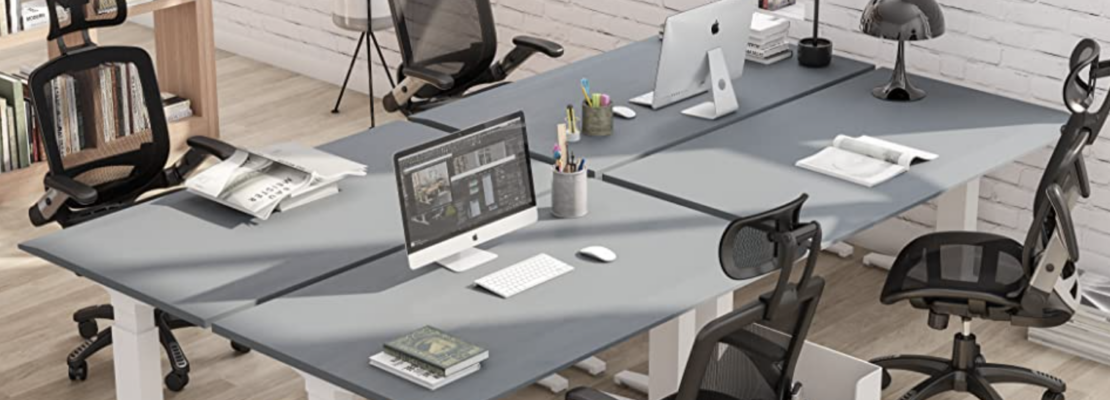Are you one of those people who spends hours working at the office and have had to deal with nagging back pain? It’s bad enough that work can cause many problems on its own. But if your work environment isn’t physically friendly and supportive of your health, it’s even worse. That’s why it pays to look for office chairs specifically designed with upper back pain relief in mind. After all, if you’re going to be spending most of your day in one spot, why not make it a comfortable one?
Today, we’ll dive into the best computer chair for long hours to avoid upper back pain relief. We’ll look at common types of chairs, how the right chair can support your upper spine and lumbar area, and everything you need to look for in a good ergonomic chair. Let’s get started!
Upper back pain is a common and often debilitating issue for office workers around the world. The cause of upper back pain can vary from person to person, but it is generally caused by tissues in the upper back being strained due to poor posture, repetitive movements, or activity that requires extended periods of sitting. It can also be caused by sitting in an office chair without the proper ergonomic support, such as one without enough lumbar support or one that does not provide adequate cushioning.
It has been suggested that genetics can also be a factor in causing upper back pain. People who have a family history of degenerative spine problems may find themselves more prone to developing this type of discomfort. Additionally, some medical conditions can cause upper back pain, such as arthritis or herniated discs.
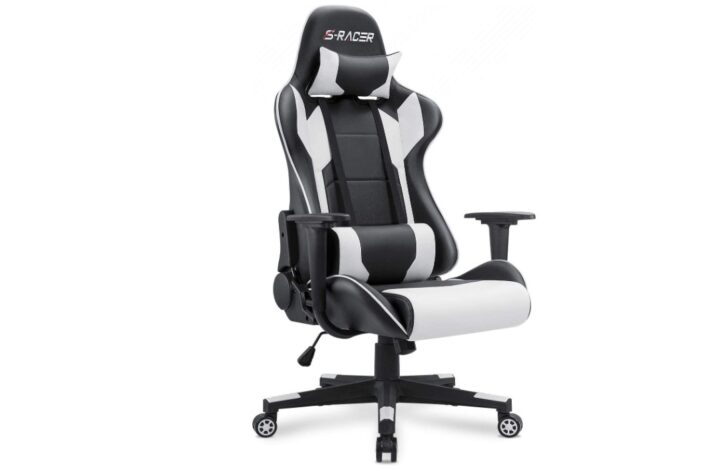
On the other hand, some health professionals argue that upper back pain primarily occurs due to musculoskeletal problems or structural deficiencies. These could involve weakened or overworked muscles or stressed ligaments that are unable to adequately support the spine while seated in an office chair. Postural issues, such as slouching or having your head tilted in an unnatural position for extended periods of time, can also lead to increased strain on the muscles and ligaments located in the upper back.
No matter what is causing it, experiencing upper back discomfort can cause decreased productivity, and make it difficult to get through your workday comfortably. Fortunately, there are ways to reduce and prevent further episodes of upper back pain. To learn more about choosing the best office chair for upper back pain relief, read on in our next section.
- According to a 2018 study, adjustable office chairs with lumbar support are most beneficial for upper back pain relief.
- A 2019 study found that using an adjustable ergonomic office chair with head and neck support can reduce musculoskeletal discomfort in the upper back.
- A 2020 review of existing studies concluded that sitting in an adjustable chair with lumbar support and a reclining posture can help prevent upper back pain.
Essential Summary Points
Upper back pain is a common issue experienced by office workers, typically caused by poor posture, repetitive motions, inadequate ergonomic support in an office chair, genetics, or medical conditions. Musculoskeletal issues and structural deficiencies can result in upper back discomfort, made worse by poor posture. To reduce or prevent episodes of upper back pain, consider investing in a supportive office chair that provides adequate lumbar and cushioning support.
How to Choose the Best Office Chair for Upper Back Pain

Choosing the best office chair for upper back pain relief can seem like a daunting task. There are many factors to consider, such as budget and room size, so it is important to start by taking inventory of your space and resources. Understanding which specific features you need in an office chair can help streamline your search and guide you through the selection process.
Adjustability is one of the most crucial components to look for in an office chair. The height should ideally be adjustable according to the user’s exact specifications, allowing them to maintain a neutral posture while working. Additionally, tilt options should be available for easy movement, as well as custom settings for lumbar support when desired. Armrests are also important for adequate posture and ergonomic comfort, although they should be adjustable as well.
Once the essential adjustability features have been taken into account, consider any additional components that might make or break the selection process. Some individuals may prefer a breathable mesh material instead of a leather surface; some might value caster wheels more heavily than footrests. These sorts of preferences drive the individual choice process and ultimately determine what makes an “ideal” chair for a particular person.
Above all else, comfort is king. If a chair does not feel comfortable in any way after having been adjusted properly, it is not suitable for efficient sitting for extended periods of time. It is imperative that an individual try out an office chair before purchasing; thus if buying online, ensure there is an acceptable return policy!
In conclusion, take stock of your individual needs when looking for an office chair for upper back pain relief; recognizing which features are vital components to your specific requirements will make shopping much simpler. With that being said, let us transition into discussing ergonomic design and specifically how it relates to office chairs…
Ergonomic Design

Ergonomic design is a key factor in selecting the best office chairs for upper back pain relief. Having an ergonomic chair helps position your body properly, encouraging good posture and reducing strain on the muscles of your neck and back. Ergonomically designed chairs provide extra support in areas that are more prone to pain. Many chairs feature lumbar support, adjustable armrests, waterfall seats, and thicker foam padding.
Proponents of ergonomic designs argue that these features can provide additional comfort and help prevent strain on the upper back. By adjusting the chair to fit your body’s shape and size, you are able to relieve pressure and reduce pain in the short term, while also preventing long-term issues associated with poor posture. Additionally, some studies suggest that providing lumbar support while sitting helps promote healthy spinal positioning which can improve overall well-being.
Controversially, opponents claim that having an ergonomic chair does not guarantee pain relief, as each person’s needs are different and what is comfortable to one individual may be uncomfortable for another. It is important to note that even an ergonomically designed chair might not be the most suitable for all people with back pain. Factors such as individual differences, sitting habits, and environmental conditions should be taken into account when selecting an office chair for upper back pain relief.
When considering the best office chairs for upper back pain relief, evaluate whether the ergonomic features meet your personal needs and preferences in terms of comfort, adjustability, and quality of construction. Next section we will consider another important feature – adjustable features – which allow users to customize the chair even further according to their own body type and desired level of support.
Adjustable Features
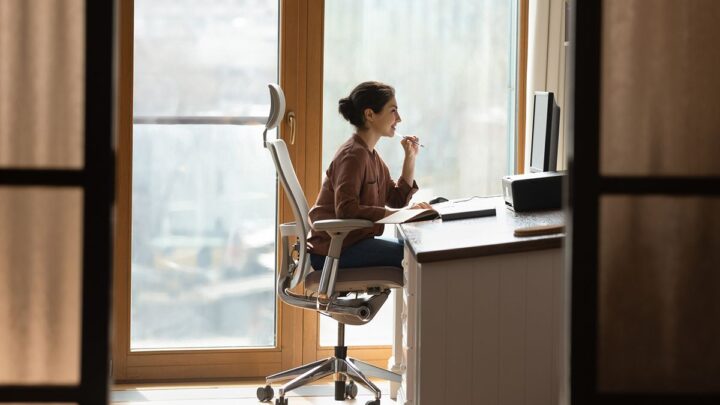
When it comes to finding the best office chair for upper back pain relief, adjustable features are a key component to consider. Not only can adjustable features help customize the chair, but they can also aid in reducing and alleviating pressure on the spine and back.
By being able to adjust lumbar and headrest support, users can prevent their upper back from slouching or sinking and maintain good posture throughout the day. Many chairs come with adjustable seat depth and tension controls so that users can sit comfortably for extended periods of time without experiencing strain. Other adjustable features include chair height, armrests, reliability, and tilt control.
Some argue that adjustable features aren’t necessary when looking for an ergonomic office chair because one size should fit all. However, nearly everyone sitting at a desk has different body types and comfort levels which is why adjustable features are important when selecting a chair for back pain relief.
In addition to adjustable features, another important aspect to look for in an office chair is high-quality materials.
High-Quality Materials
Well-made and high-quality chairs typically feature materials that are durable and long-lasting. When considering a chair for upper back pain, it’s important to take into account the material used in its construction. Ideally, the chair should be made of strong metals and alloys such as steel or aluminum, which have been proven to remain durable over time with plenty of cushioning.
Leather chairs are also a popular option, as they provide additional support and comfort due to their flexibility. Leather is also less prone to moisture damage than other materials, such as fabric or synthetics, so it can hold up better over time. Additionally, some leather office chairs offer lumbar adjustment capabilities, allowing the user to customize their seating position for maximum support and comfort.
On the other hand, there are those who argue that fabric chairs are more comfortable than leather options due to their cushioning capabilities, which promote enhanced air circulation between the chair and body to keep one cool during long workdays. In addition, the fabric upholstery is more aesthetically appealing than leather in many offices and can help create a modern ambiance.
Regardless of your personal preference for either leather or fabric, it’s important to select a chair constructed from quality materials that will be able to withstand regular use without deteriorating quickly. By investing in a high-quality office chair that offers optimal support and cushioning, you can ensure that you experience maximum comfort while alleviating upper back pain symptoms.
Optimal Cushioning
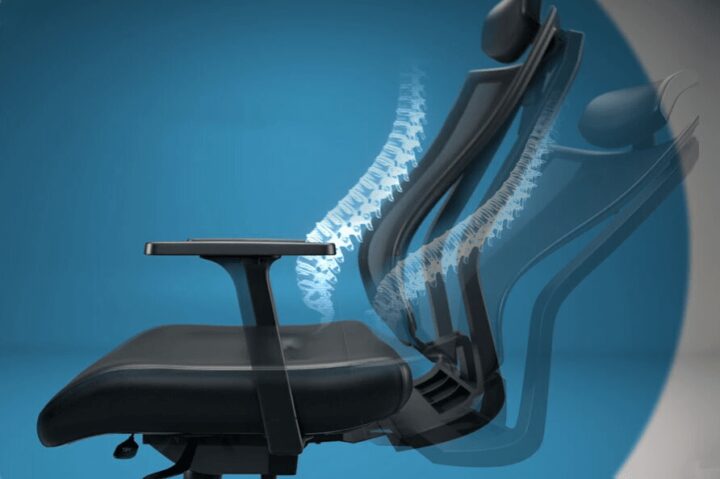
Optimal cushioning is essential for maximizing comfort when selecting an office chair designed to ease upper back pain symptoms. We will now examine what features make cushioning truly optimal for this purpose.
When considering ergonomic office chairs for upper back pain relief, cushioning must be taken into account as an important factor. Soft cushioning is beneficial for ensuring adequate padding which can help alleviate discomfort from sitting in one position for long periods of time. It also helps keep the spine in a neutral position, allowing it to support the body properly. On the other hand, too much cushioning can be just as bad, if not worse. Too much cushioning can cause the user to sink too far down into the chair and make them slouch or hunch over. This will put a strain on the muscles in the back and shoulders, negating any benefit of having good lumbar support.
The optimal amount of cushioning for an office chair depends on a variety of factors such as weight, posture, and how much time is spent sitting. As such, it is important to find an office chair that provides a balance between firmness and softness that best suits individual needs.
As we have discussed, finding a properly padded office chair with the right amount of cushioning is essential when looking for relief from upper back pain. In the next section, we will discuss some of the best office chairs for upper back pain on the market today that offer both comfort and support.
The Best Office Chairs for Upper Back Pain
When looking for the best office chairs to alleviate upper back pain, it is important to take into account ergonomic features and adjustability. Ergonomically designed chairs that offer support for maintaining the natural curvature of the human spine can help relieve discomfort in your neck, shoulders, and upper back.
Additionally, office chairs with adjustable armrests and lumbar support can help reduce any strain on these areas. Many of these chairs feature long seat pans, allowing you to adjust the depth of your chair from front to back, so you can position yourself comfortably while typing or reading. While comfort is key, it’s equally important to buy a chair that is sturdy enough to hold up throughout the duration of its lifetime.
Some may argue that traditional ergonomic chairs are uncomfortable or bulky, but there are now a number of more aesthetically pleasing options available on the market. Even if you opt for something that looks more conventional than a typical ergonomic chair, you can still find seating solutions with adjustable lumbar supports, armrests, and the basic functions needed to provide back relief.
Whether you choose an ergonomic chair or an aesthetic option with just the basics for support, investing in comfortable seating for your workspace is essential for preventing or relieving upper back pain. Now we will discuss some tips on how to improve your posture and comfort while sitting at a desk all day long.
Tips to Improve Your Posture and Comfort
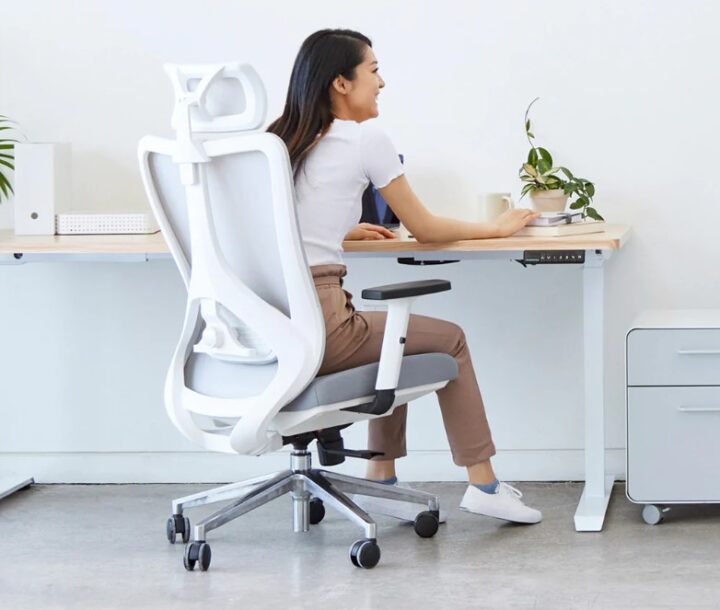
Good posture is essential to relieving upper back pain and ensuring comfort while sitting in an office chair. Sitting comfortably with proper posture can help to prevent poor circulation, neck pain, and soreness in the shoulders and lower back as well. Here are a few tips to help improve your posture while seated:
- Keep your feet flat on the ground with your knees bent at right angles, or slightly higher if you can.
- Center your weight between both hips and refrain from leaning to one side of the chair.
- Make sure your spine is straight by adjusting the height of your chair so that it supports the bend in your lower back (lumbar curve) and aligns with your upper back so that it can rest comfortably against the backrest.
- Push your shoulder blades down and toward each other, keeping them directly over the waistline. Also make sure that when typing at a computer keyboard, the horizontal line of your eyes is parallel with the monitor.
- If you’re using a laptop computer, ensure that you can type correctly without having to look down at the keys and that there is adequate support for your wrist while typing. Investing in a separate monitor or laptop stand as well as an external keyboard and mouse may also help to improve comfort and reduce upper back strain caused by awkward postures or long hours of use.
- Take frequent breaks from sitting throughout the day to help keep joints limber, stretch, take short walks, and even perform simple exercises such as wall push-ups or desk yoga stretches in order to get some range of motion into tight muscles.
Though improvements in posture can offer great benefits for reducing upper back pain and improving comfort levels, it is important to note that not all chairs are equal when it comes to supporting and alignment – often times an ergonomic office chair may be needed to meet individual needs or preferences. With that in mind, let’s look closer at how different types of office chairs can provide better ergonomic solutions for those who suffer from upper back pain.
Conclusion
The right office chair plays an important role when it comes to helping relieve upper back pain. Different types of chairs offer various levels of ergonomic support which allows individuals to properly adjust their posture while finding comfort in their seating position. In this next section, we will explore how distinct types of office chairs are best suited for upper back pain relief.
When choosing an office chair for upper back pain relief, it is important to understand the causes of your pain and select a chair that will best support your posture, height, and weight. Motion chairs with adjustable lumbar support and headrests can help reduce back pain over time by supporting a neutral spine position while allowing the user to recline while they work. Desk chairs that provide a supportive seat pan, firm cushioning, and adjustable arm rests can help relieve upper back pain caused by prolonged sitting in a fixed position.
Upper back pain can vary from person to person, so it is important to choose the chair that fits you best. Budget is another factor to consider when selecting an office chair for upper back pain relief; however, one must also be aware of the potential long-term benefits of investing in a more expensive option. Ultimately, comfort should always be your number one priority when selecting a chair for use in the office – no matter the cost.

